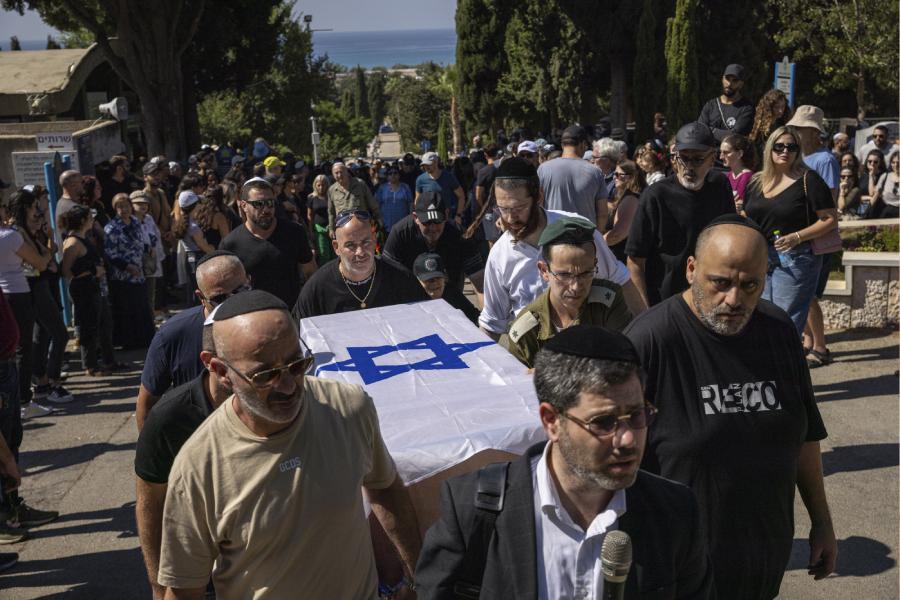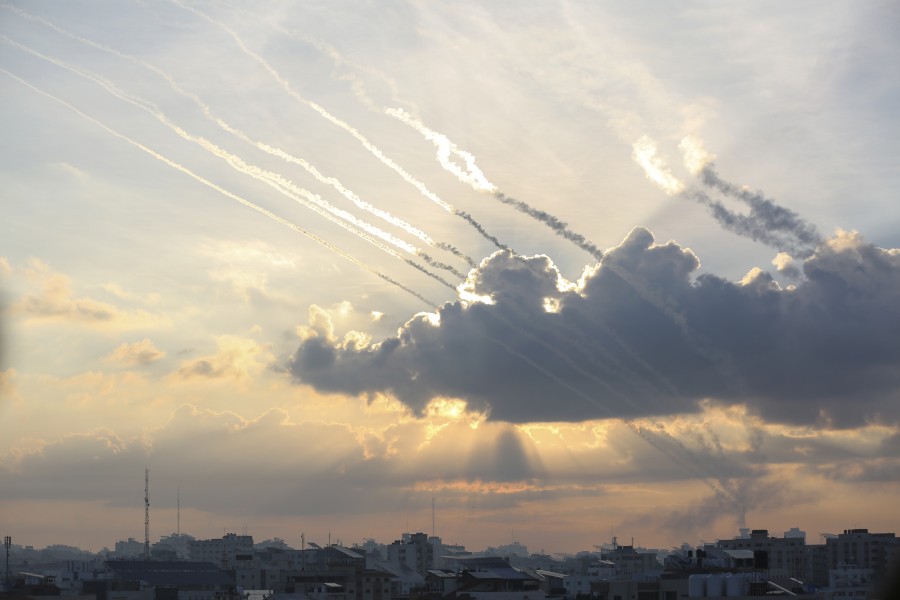
How, fuelled by arrogance & hubris, years of Israeli failures on Hamas led to a devastating attack
The most powerful military force in the Middle East had not only completely underestimated the magnitude of the attack, it had totally failed in its intelligence-gathering efforts, mostly due to hubris and the mistaken assumption that Hamas was a threat contained
It was 3 a.m. on Oct. 7, and Ronen Bar, head of Israel’s domestic security service, still could not determine if what he was seeing was just another Hamas military exercise.
At the headquarters of his service, Shin Bet, officials had spent hours monitoring Hamas activity in the Gaza Strip, which was unusually active for the middle of the night. Israeli intelligence and national security officials, who had convinced themselves that Hamas had no interest in going to war, initially assumed it was just a nighttime exercise.
Their judgment that night might have been different had they been listening to traffic on the hand-held radios of Hamas militants. But Unit 8200, Israel’s signals intelligence agency, had stopped eavesdropping on those networks a year earlier because they saw it as a waste of effort.
As time passed that night, Bar thought that Hamas might attempt a small-scale assault. He discussed his concerns with Israel’s top generals and ordered the “Tequila” team — a group of elite counterterrorism forces — to deploy to Israel’s southern border.
Until nearly the start of the attack, nobody believed the situation was serious enough to wake up Prime Minister Benjamin Netanyahu, according to three Israeli defense officials.
Within hours, the Tequila troops were embroiled in a battle with thousands of Hamas gunmen who penetrated Israel’s vaunted border fence, sped in trucks and on motorbikes into southern Israel and attacked villages and military bases.
Failed intelligence-gathering
The most powerful military force in the Middle East had not only completely underestimated the magnitude of the attack, it had totally failed in its intelligence-gathering efforts, mostly due to hubris and the mistaken assumption that Hamas was a threat contained.
Despite Israel’s sophisticated technological prowess in espionage, Hamas gunmen had undergone extensive training for the assault, virtually undetected for at least a year. The fighters, who were divided into different units with specific goals, had meticulous information on Israel’s military bases and the layout of kibbutzim.
The country’s once-invincible sense of security was shattered.
More than 1,400 people were killed, including many women, children and old people who were murdered systematically and brutally. Hundreds are held hostage or are missing. Israel has responded with a ferocious bombardment campaign on Gaza, killing more than 8,000 Palestinians and wounding thousands more, according to the Hamas-run health ministry. The Israeli military on October 29 signaled a heavier assault on Gaza.
Israeli officials have promised a full investigation into what went wrong.
Cascade of failures
Even before that inquiry, it is clear the attacks were possible because of a cascade of failures over recent years — not hours, days or weeks. A New York Times examination, based on dozens of interviews with Israeli, Arab, European and U.S. officials, as well as a review of Israeli government documents and evidence collected since the Oct. 7 raid, shows that:
— Israeli security officials spent months trying to warn Netanyahu that the political turmoil caused by his domestic policies was weakening the country’s security and emboldening Israel’s enemies. Netanyahu continued to push those policies. On one day in July, he even refused to meet a senior general who came to deliver a threat warning based on classified intelligence, according to Israeli officials.
— Israeli officials misjudged the threat posed by Hamas for years and, more critically, in the run-up to the attack. The official assessment of Israeli military intelligence and the National Security Council since May 2021 was that Hamas had no interest in launching an attack from Gaza that might invite a devastating response from Israel, according to five people familiar with the assessments. Instead, Israeli intelligence assessed that Hamas was trying to foment violence against Israelis in the West Bank, which is controlled by its rival, the Palestinian Authority.
— The belief by Netanyahu and top Israeli security officials that Iran and Hezbollah, its most powerful proxy force, presented the gravest threat to Israel diverted attention and resources away from countering Hamas. In late September, senior Israeli officials told the Times they were concerned that Israel might be attacked in the coming weeks or months on several fronts by Iran-backed militia groups, but made no mention of Hamas initiating a war with Israel from the Gaza Strip.
— U.S. spy agencies in recent years had largely stopped collecting intelligence on Hamas and its plans, believing the group was a regional threat that Israel was managing.
Arrogant conviction
Overall, arrogance among Israeli political and security officials convinced them that the country’s military and technological superiority to Hamas would keep the terrorist group in check.
Many senior officials have accepted responsibility, but Netanyahu has not. At 1 a.m. October 29 in Israel, after his office was asked for comment on this article, he posted a message on X that repeated remarks he made to the Times and blamed the military and intelligence services for failing to provide him with any warning on Hamas.
“Under no circumstances and at no stage was Prime Minister Netanyahu warned of war intentions on the part of Hamas,” the post read in Hebrew. “On the contrary, the assessment of the entire security echelon, including the head of military intelligence and the head of Shin Bet, was that Hamas was deterred and was seeking an arrangement.”
In the resulting furor, Benny Gantz, a member of his war Cabinet, publicly rebuked Netanyahu, saying that “leadership means displaying responsibility,” and urged the prime minister to retract the post. It was later deleted, and Netanyahu apologized in a new one.
Ignored warnings
On July 24, two senior Israeli generals arrived at the Knesset, Israel’s parliament, to deliver urgent warnings to Israeli lawmakers, according to three Israeli defense officials.
The Knesset was scheduled that day to give final approval to one of Netanyahu’s attempts to curb the power of Israel’s judiciary — an effort that had convulsed Israeli society, ignited massive street protests and led to large-scale resignations from the military reserves.
A growing portion of the air force’s operational pilots was threatening to refuse to report to duty if the legislation passed.
In the briefcase of one of the generals, Aharon Haliva, head of the Israeli Defense Forces’ Military Intelligence Directorate, were highly classified documents detailing a judgment by intelligence officials that the political turmoil was emboldening Israel’s enemies. One document stated that the leaders of what Israeli officials call the “axis of resistance” — Iran, Syria, Hamas, Hezbollah and Palestinian Islamic Jihad — believed this was a moment of Israeli weakness and a time to strike.
Hezbollah’s leader, Hassan Nasrallah, according to one of the documents, said it was necessary to prepare for a major war.
Haliva was ready to tell the coalition leaders that the political turmoil was creating an opportunity for Israel’s enemies to attack. Only two members of the Knesset came to hear his briefing.The legislation passed overwhelmingly.
Separately, Gen. Herzi Halevi, the military’s chief of staff, tried to deliver the same warnings to Netanyahu. The prime minister refused to meet him, the officials said.Israeli officials believed that Hezbollah was leading the planning for a coordinated attack against Israel, but not one that would prompt an all-out war.
The officials’ concerns grew through August and September, and Halevi went public with his concerns.
“We must be more prepared than ever for a multiarena and extensive military conflict,” he said at a military ceremony Sept. 11, just weeks before the attack.Netanyahu’s allies went on Israeli television and condemned Halevi for sowing panic.
In a series of meetings, Shin Bet gave similar warnings to senior Israeli officials as Halevi. Eventually, Bar also went public.
The invincibility of the wall
Israeli officials firmly believed that “The Barrier” — a nearly 40-mile-long reinforced concrete wall above and below ground — would seal off Gaza. There was also a surveillance system at the border based almost exclusively on cameras, sensors and remote-operated “sight-shooter” systems, four senior Israeli military officers told the Times.
Senior Israeli military officials believed that the combination of remote surveillance and machine-gun systems with the formidable wall would make it almost impossible to infiltrate Israel, and thus reduce the need for a large number of soldiers to be stationed at the bases.
But Hamas’ attack exposed the fragility of that technology. The group used explosive drones that damaged the cellular antennas and the remote firing systems that protected the fence between Gaza and Israel.
To get around Israel’s powerful surveillance technology, Hamas fighters also appeared to enforce strict discipline among the group’s ranks to not discuss its activities on mobile phones.
The group most likely divided its fighters into smaller cells.
In a conversation with military investigators two weeks after the attack, soldiers who survived the assault testified that the Hamas training was so precise that they damaged a row of cameras and communication systems so that “all our screens turned off in almost the exact same second.” The result of all this was a near total blindness on the morning of the attack.
After the fighting had stopped, Israeli soldiers found hand-held radios on the dead bodies of some of the Hamas militants — the same radios that Israeli intelligence officials had decided a year ago were no longer worth monitoring.




0 Response to " How, fuelled by arrogance & hubris, years of Israeli failures on Hamas led to a devastating attack"
Post a Comment
Disclaimer Note:
The views expressed in the articles published here are solely those of the author and do not necessarily reflect the official policy, position, or perspective of Kalimpong News or KalimNews. Kalimpong News and KalimNews disclaim all liability for the published or posted articles, news, and information and assume no responsibility for the accuracy or validity of the content.
Kalimpong News is a non-profit online news platform managed by KalimNews and operated under the Kalimpong Press Club.
Comment Policy:
We encourage respectful and constructive discussions. Please ensure decency while commenting and register with your email ID to participate.
Note: only a member of this blog may post a comment.